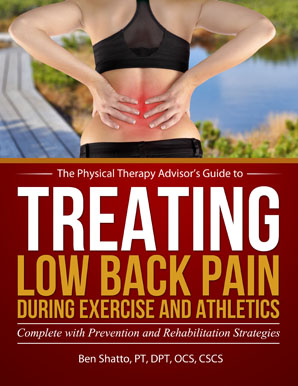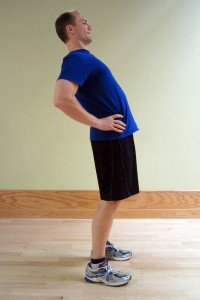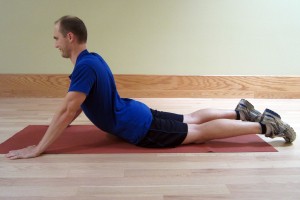By Jerry Henderson on October 7, 2015.
It is clear that to me that there is a chronic pain epidemic in this country. My belief was confirmed by some disturbing results from a cross sectional survey of over 27,000 people on the prevalence of pain. The study was conducted by Johanne and associates in 2012[i] and it showed:
- Approximately 30% of the respondents had long lasting chronic pain or recurrent pain, and:
- Most had either lower back pain (8%) or pain from other osteoarthritic conditions (4%).
- Half had daily pain.
- About 1/3 of those reported their pain as severe (at least 7 on a 0/10 verbal pain rating scale).
- Prevalence increased with age, lower socioeconomic status, and unemployment.
An Institute of Medicine report estimates that 116 million Americans suffer from chronic pain and that the combined medical and financial cost due to lost productivity is $635 million per year,[ii] which is more than the annual costs of cancer, heart disease, and diabetes.
Describing Chronic Pain
There are many definitions of chronic pain, but one of the most widely accepted is any pain lasting longer than 12 weeks. Experiencing pain for longer than 12 weeks is simply not normal. In contrast, acute pain, that is, pain lasting for a shorter period of time, is our internal warning system about serious tissue damage.
Think about the difference between the qualities of the pain you experience from a minor skin cut compared to the pain you have probably experienced at some time in your life from your lower back.
The pain from a skin cut feels sharp. You can tell, without looking where the cut is on your skin, and you can estimate whether or not the cut is serious. The lower back pain may initially feel like a sharp, stabbing pain, but after a few days it often develops into a deep aching. You don’t have a good idea of how badly you are hurt, and you have a hard time describing where it hurts. In fact, the location of the pain may change over time.
As the skin cut heals, the pain resolves quickly. As the low back heals, the pain may resolve quickly, but (for reasons that are not well understood) it may not. That deep, aching pain may just continue for weeks, and it may cause complex changes in your brain chemistry that make it even worse. Over time, this type of pain builds on itself to the point that in the worst cases it becomes completely disabling and is often associated with clinical depression.
I often told my patients that pain of this sort is a liar. It may provide important clues about the source of the problem, but that’s all–just some clues. Other than clues, we shouldn’t rely too much on this type of pain to tell us much of anything.
“If I Had a Hammer….”
The old saying, “If you have a hammer, everything looks like a nail,” holds true for chronic pain treatment. The physician tool chest (which includes narcotic medications, injections, surgery, and imaging studies) seems to be woefully inadequate at treating this type of pain.
Use of narcotic medications works great for acute pain, but they are dangerously addicting and have other perverse side effects like making clinical depression associated with chronic pain even worse in some cases. In my experience, the term “Pain Clinics” is often code for drug rehabilitation for patients who have been addicted to narcotic pain medications for their chronic pain.
The dismal record of surgery, particularly spinal fusion, for low back pain is well documented. The New York Times reported on a recent study from the Journal of the American Medical Association indicating that injections for non-specific lower back pain are ineffective, even though they are done routinely[iii].
What is the Answer?
Chronic pain is pervasive, disabling, and costly. It causes untold suffering. It can rob patients of their livelihoods. Typical care for chronic pain isn’t very effective. I believe that physical therapy is the best treatment available.
I find this excerpt from an article published by the National Institutes of Health very telling:[iv]
Self-management of chronic pain holds great promise as a treatment approach. In self-management programs, the individual patient becomes an active participant in his or her pain treatment—engaging in problem-solving, pacing, decision-making, and taking actions to manage their pain. Although self-management programs can differ, they have some common features. Their approach is that the person living with pain needs help learning to think, feel, and do better, despite the persistence of pain. Improving communication with the healthcare provider is part of that empowerment.
Through NIH-supported research, starting successful self-management programs has reduced many barriers to effective pain management, regardless of the underlying conditions. Individuals who participate in these programs have significantly increased their ability to cope with pain. They improve their ability to be active, healthy, and involved members of their communities. In fact, new research suggests that the best self-management programs teach people different ways of thinking about and responding to pain, making their actions to relieve it more effective.
Read that excerpt carefully. Doesn’t that sound like physical therapy?
Physical therapists need to take the lead on being the providers of choice for these types of problems. No one can do it better.
[i] http://www.ncbi.nlm.nih.gov/pubmed/20797916
[ii] http://www.amednews.com/article/20110708/profession/307089996/8/
[iii] http://well.blogs.nytimes.com/2013/07/18/looking-for-alternatives-for-back-pain-relief/
[iv] https://www.nlm.nih.gov/medlineplus/magazine/issues/spring11/articles/spring11pg5-6.html
 About Jerry Henderson
About Jerry Henderson
Jerry Henderson has been a physical therapist for over 25 years and is passionate about providing his PT colleagues with proven processes and state of the art systems to enable them to excel in delivering excellent patient care. He currently serves as VP for Clinical Community at Clinicient, Inc. http://www.clinicient.com/









